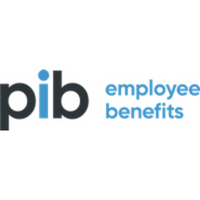How to choose the right benefits for your workforce to deliver your financial wellbeing strategy

In recent years the employee benefits market has seen an increase in the number of employers investing in some form of financial wellbeing support as part of their benefits approach. This is due to an increased awareness of the relationship between poor mental wellbeing as a result of financial worries, and the productivity, and even absenteeism of employees.
As income providers, employers have an important role to play in supporting their employees’ financial wellbeing, and through this they can be a key source of support and information. Financial wellbeing through education is particularly key for younger employees who may not know where to start in building a secure financial base. The National Curriculum within the UK is notoriously light on schooling children in the basics of finance. This means that upon embarking on their first job, young people may have little to no knowledge of fundamental elements of personal finance, such as interest rates, tax and credit scores.
At the other end of the age spectrum, the vast number of choices now available to those approaching retirement can mean that many need some support to ensure that they are making informed decisions for their future. And for those in between, you may have employees who are seeking advice about how they get a foot on the property ladder, how to cover school fees, the cheapest way to service debt, managing credit cards, supporting elderly relatives who may need expensive care, and a myriad of other financial concerns.
Choosing the right benefits for your workforce
With all of this in mind, how do you choose the right employee benefits to support a comprehensive financial wellbeing strategy that offers something for everyone? The first place to start is to look at your existing benefits:
- Does your employee benefits scheme help with some of the key pillars of financial wellbeing? Traditional benefits such as pensions, life assurance, income protection and critical illness play a vital part in helping employees cover the key financial issues of funding retirement and being financially protected if the worst happens, and the value of this should not be underestimated. But do your employees know the full details of these valuable benefits?
- What additional services do the providers of your existing benefits offer to support financial wellbeing? From retirement planning services, to probate support in the event of death, you may find your existing schemes offer a wealth of additional services and support that can feed into your financial wellbeing strategy. But again, it’s key to ensure your employees are aware of these services, plus how to access and utilise them.
- Employee assistance programmes have evolved in recent years and even those provided for free with your life assurance or income protection schemes have some fantastic resources for employees to use, as long as guidance on how to access them is provided.
Once you know which areas of financial wellbeing are already covered by your existing employee benefits, the key is to identify any gaps. An employee survey is always a good way to find out more about your employees and assess their priorities. The survey, combined with an analysis of your demographics can be used to identify which benefits may be most appealing to your workforce, and which would be most appropriate in ensuring they are supported at key life events.
Getting the message to employees
The final piece of the jigsaw is to ensure you have a robust and comprehensive communication programme so that employees recognise and understand the support that is available to them, especially in times when they need it most.
Our consultants are increasingly seeing the use of technology and benefit portals to deliver messages and support to employees. A benefit portal is an essential tool to communicate a wide range of benefits to your diverse demographic. Many of the additional benefits discussed can now be accessed free of charge for both the employer and employee. However in order to ensure that employees recognise the support offered to them, you need to provide comprehensive details about the particular benefit, which the employee can access when and where it suits them. By using a portal that can be accessed anywhere at any time, you can ensure your employees get the support they need, when they need it most.
Some of the benefits mentioned, and portals in particular, have previously been the preserve of larger employers, however our consultants are seeing an increasingly wide range of options for SMEs and micro employers. There is no longer any reason why your employee benefits approach cannot support your employees with their financial wellbeing which will, in turn, help to enhance their overall wellbeing.
This article is provided by PIB Employee Benefits.
Supplied by REBA Associate Member, PIB Employee Benefits
PIB Employee Benefits is a forward-thinking consulting business.






